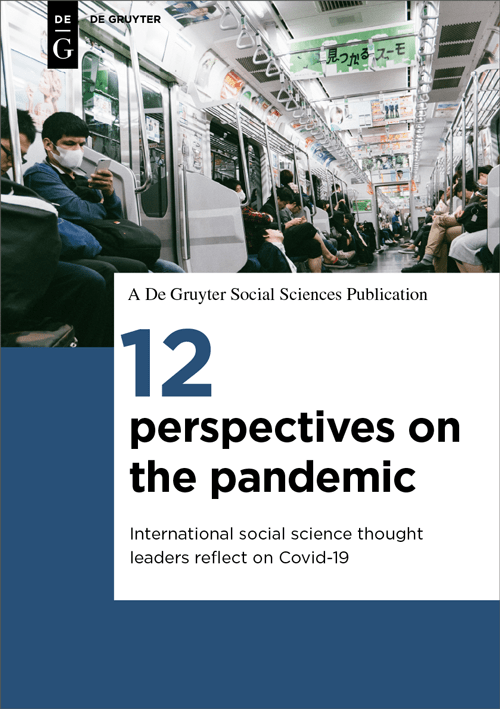Don’t Confuse Constraints with Confinement during COVID-19
Will the words we choose and the thought processes that accompany them help us through this crisis? Can we ever equate freedom with confinement or do we just need to shift our thinking?
This essay was first published in the free digital pamphlet 12 Perspectives on
the Pandemic: International Social Science Thought Leaders Reflect on Covid-19.
There is no historical, species-specific evidence for being confined to an inside space and for limited interactions with others. However, a visitor from a distant future planet may look at some of our residential tower blocks or our current isolation measures and decide the opposite. However, we’d then need to put everything into context for them.
Language and Evolution
A key evolutionary trait of our species, one that has promoted exceptional growth and dominion over this planet, has been our development of communication abilities. I am not referring to our current telecommunications — these are just a blip in the history of communicative advancements — but to language itself. This is a skill linked to several evolutionary events, such as bipedalism, which led to the lowering of the larynx and the use of the vocal tract to make meaningful sounds. In fact, human beings would not be particularly fascinating animals if it were not for their ability to express thoughts by sounds and scratches, and with these, to inspire, deceive, and control with words alone.
“Paralleling the rise of language were all meaning-making systems that could signify to others what we adhered to, where we ranked, and what we feared.”
Why language? Before language, we were mere mammals. We lived in large groups, and these required strategies to alert, describe, and justify movements to others; we did it with gestures and pre-vocal systems. But after language was developed, we quickly evolved from simple to complex utterances. Paralleling the rise of language were all meaning-making systems that could signify to others what we adhered to, where we ranked, and what we feared. The greater our elaboration of these systems, the more efficient we became at organizing ourselves and our world. The more we reaped from it the necessary resources, the more we thrived. Sedentary life became common place. Power structures seeped into our kinship systems, regulatory bodies, religions and institutions. Symbols and language allowed for efficiency of exchange. People were subjugated to the symbolic structures we erected. Regardless of our desire to stay put, and our acceptance to be under the governance of others and established ideas, we have always desired freedom, expressed unconsciously in our words which are symbols themselves. Humans are symbolic animals.
Does Freedom Exist?
Through our symbols, we can achieve a manipulation of meaning which, in turn, can be used to control how we perceive freedom. But, does freedom really exist, or is it merely a machination of the sense-producing machinery of the mind allowing for such Platonic follies to arise? Is it a distraction from suffering? Maybe so. Regardless of the ‘whys’ (our imposition of constraints in exchange for freedom), never in the heritage of acceptable structures were we, as humans, prepared to accept ‘confinement’ unless as punishment. Confinement is very different from constraint, which requires the employment of one’s will. Confinement, by contrast, is imposition on another’s will.
Foucault has been frequently cited recently to remind us of the dangers of false binary thinking, which may lead to a police state closing in. For me, his most important contribution to this debate is from his work ‘Discipline and Punish’ and is less about the panopticonic ideas emerging during a pandemic but more about the standards ushered in for punishment, i.e. prisons and their architecture. That is to say, the very space where people are confined for punishment. I will add that it is not so much the space itself, but rather, the confinement that the space signifies. Right now, confinement is starting to resemble what previously defined its opposite (paradoxically forming a binary system): safety, family, food, the home.
Home and Safety
Much is to be said about the importance of asserting more power centrally during difficult times, and why we can accept the good with the bad. But what we cannot accept, at least at the level of our bodies, is to begin seeing the home (the epicenter and the keeper of the species) as a space of confinement. This is what we find difficult, of course, for those of us who have the luxury to have a home — and one that we see as a safe place.
So, if you are struggling with doing your part and staying home, you are struggling with an ancient inner opposition — the refusal to equate freedom with confinement. As such, in semiotic turns, you must restructure the notion of confinement as related to present physical spaces, and locate it in the context of humanity as a whole. These are ideas we developed to protect ourselves, so let’s use them to do so. Stay home. You are not confined … you are but merely constrained.
Learn more in this related title from De Gruyter
[Title Image via Getty Images.
